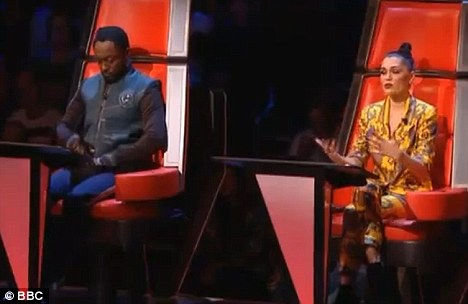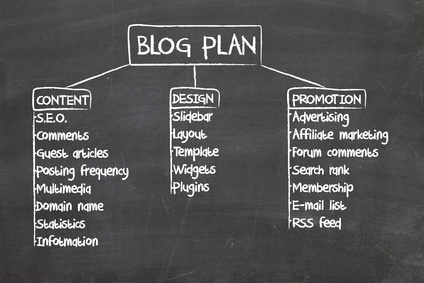Marketing agency trends: The opportunity cost of not doing social
By Danielle Stagg on 28 January 2014
SEO and social media tools from a digital marketing agency
By Danielle Stagg on 12 December 2013
Knowing where to look when it comes to SEO and Social Media advice can be a battle, but here, Richard O'flynn, Director of digital marketing agency, 201 Digital, offers his top professional tools and tricks to stay ahead...
Professional tools for SEO and social media Searching Google for ‘SEO tools’ offers almost 40 million hits, and looking for ‘social media tools’ gives you ‘approximately’ 677 million. If even Google can only be bothered to approximate, then that makes searching for the right SEO and social media tools for your business something of a tricky ask, right? Add to that the plethora of social networks that are around and it can be difficult to handle the social networks you choose that are best for your niche.
Fortunately, we’re here to help – here’s a list of some fantastic, essential tools that can really help boost the social media and SEO side of your business.
1. Staying contented
Marketing Agency Trends 2013: The effect of Twitter's IPO
By Danielle Stagg on 28 November 2013
Facebook’s well publicised initial public offering (IPO) transition has had it is ups and downs. But as Twitter files for IPO, will they be able to avoid the mistakes Facebook have made?
Here Shelley Martin of PR agency, Neo PR discusses what the move means for Twitter's biggest competitor, Facebook, as well as the businesses and PR agencies that use it
Facebook and Twitter are obvious rivals and with Twitter moving to their IPO, both companies will be competing even more publicly. The competition between the two is also hotting up in terms of the advertising with both companies growing their sites advertising functionality.
Facebook only last month increased the size of the images that can be included within their adverts and are aiming to increase ad clicks, with users now able to click on any part of an advert to reach an advertiser’s website opposed to the previous hyperlink method. Whereas an ex-Facebook executive was quoted saying that Twitter’s s $350 million acquisition of mobile ad company MoPub makes Twitter a superior product, potentially in terms of mobile advertising, so the war rages on.
STATS: Why marketing agencies should brush up on Twitter
By Danielle Stagg on 27 September 2013
A good marketing agency will use all the tools available to them. One media platform can often support another, which is why few PR agencies or marketing agencies overlook the enormity of social media and the power it has to lift campaigns and boost ROI.
It's difficult to fathom the fact that Twitter has been filling our screens and shaping our social sphere for 7 years. In that time 170 billion tweets have been posted by over 200m monthly active users. It's hard to gauge the success of one platform alone, yet these stats go some way:
How to tweet effectively: Tips from Will.I.Am and Taco Bell
By Danielle Stagg on 13 June 2013
Gary Stringer is the Digital Marketing Manager of AccuraCast, a Digital Marketing Agency focussed on web traffic and customer engage engagement.
People ask me a lot, how can I tweet effectively and what are your best tips for using twitter?
How to create social currency
By Danielle Stagg on 6 June 2013
Phil Wright is the Director of creative comms agency WrightObara.
By definition the term ‘social currency’ suggests it has an implicit value. But as with everything in life, to realise this value takes effort. But how can a business start to create - and benefit from - social currency?
It’s my experience that businesses know that they should be engaging in social media, but most aren’t sure why or how to go about it. Up until recently most social engagement has been an extension of a brand’s above the line campaign, a drive to collect ‘likes’ or an attempt to go ‘viral’ with a humorous but ultimately juvenile stunt. This isn’t social currency.
Pass it on
Effective content marketing strategy: Do's and Don'ts (Part 1)
By Danielle Stagg on 11 April 2013
Content marketing is the creation and publication of interesting content (such as blog articles, comment pieces or multimedia shares) with the objective of driving traffic to your site and promoting your brand. Having a good content marketing strategy is essential for anyone looking to keep up with their competitors, foster consumer relationships and get the attention of potential consumers.
Key types of marketing content:
- Viral: Content that is designed to spread and be shared across social platforms. This content marketing strategy has a short lifespan and is predominately designed as a quick-fix, that is, to entertain, provoke (often emotional) reactions and to provide the 'wow' factor. It's great for growth and getting your name out there but doesn't offer the reader much in terms of substance. Examples of viral content marketing include infographics, videos, stats and picture galleries.
- Lead gen: Marketing content that aims to point out a problem or gap in the reader's knowledge and to then provide a solution (solved by opting in or signing up). This is a popular content marketing strategy encompassing all aspects of marketing, PR and brand journalism. It is designed to spark some kind of call to action.
- Sales gen: As above but with the objective of triggering a sale rather than a sign up.
- Discussion: As you would expect, this type of content is designed to create conversation and promote interaction between not only the reader and publisher but the readers themselves. This kind of community-focused thought-leadership is best characterised by comment or reaction pieces, industry overviews, insider/insight articles or instructional pieces, for example Do's and Don'ts (just like this!).
So, with that out the way, here are our very own Do's and Don'ts, to help you develop your content marketing strategy.
DO: Offer the reader something
Viral content marketing aside, each piece of content should help the reader in some way. This could be through educating, advising, entertaining or offering some kind of solution. Yes, at the end of the day Content Marketing is just that, marketing, but it should ultimately lead the reader to some kind of goal rather than just be self-serving. It should aim to encourage contribution and engagement while positioning your brand as a go-to thought leader or expert.
DON'T: Regurgitate old content
In the real world recycling may be great, but online there's nothing worse. Your content marketing strategy should be inventive and reactionary, incorporating developments in the industry, the latest viral trends and consistently offer your readers something new, fresh and engaging.
DO: Make it search-friendly
All marketing content strategies should be SEO (or Search Engine Optimisation)-friendly. That means when generating your content you need to take into account what your audience is looking for and what is likely to draw attention. With Google's updated algorthyms now kicking in it can be hard to stay ahead of the system, but SEO Moz is a great place to start. Also make sure you are monitoring your social footprint and the traffic your content generates. This way you'll know what is working and what isn't, as well as identifying room for growth.
Video Marketing campaigns: brands that got it right
By Danielle Stagg on 9 April 2013
Video marketing, be it viral or social is a great way bolster brand leverage, flex your online muscle and boost consumer engagement.
As consumer attention is increasingly drawn online, video marketing is becoming the norm for marketing departments looking to differentiate their brand from their competitors- with some thinking more outside the box than others.
Here, we've compiled a list of some of our favourite and most effective video marketing campaigns, including offerings from the likes of Coke, T-Mobile and Red Bull.
Video marketing campaign #1: KLM and Personal Space
Video is a great tool that allows brands to visually demonstrate a USP or concept whilst simultaneously promoting an ethos. KLM have identified their target audience and found an enjoyable way to communicate their message. It's also cringe-worthingly fun to watch.
Video marketing campaign #2: VW target San Paolo with SM
Here VW have proved that video marketing can be used for more than just comms but as a demonstration of social media strategy too. Often video is the glue that ties many channels together- this is a clear example of this 'coming together' of digital media.
Video marketing campaign #3: The Coca-Cola Happiness Truck
This is as much an example of experiential marketing as it is video marketing, but along with their Coke Friendship Machine, Coca-Cola are consistent in their use of video to propagate the 'brand experience'. Their video content is designed to evoke emotion, thus keeping consumers loyal via experiences that are memorable, encourage customer participation and offer personally relevant, credible and memorable encounters.
Video marketing campaign #4: Spanair & the Christmas Conveyer Belt
Another campaign designed to tug at the heart strings, this video marketing example shows how with a little innovation, brands can overcome the rigidity of their industry's image. While BA and AA opt for the concept of luxury or Easyjet for value, Spanair decided to travel the path less trodden: that of brand experience, with a 'behind the scenes' look at how they work to make their customers happy.
Video marketing campaign #5: Red Bull snowboarding
Any Red Bull campaign could make this list; their team has pioneered the use of video to create a brand identity (their Space Jump smashed viral records). Red Bull's content is always visually appealing, uniquely thrilling and has transcended the limits imposed by the product itself.
Video marketing campaign #6: T-Mobile Traffic Wardens
It's possible that when it comes to video marketing nobody does it better that T-Mobile. From their Liverpool Street Station Flashmob - 37m views and counting- to this, their lesser known but arguably better Traffic Warden campaign, the T-Mobile team have become experts in tying interesting, enjoyable and most importantly shareable ideas to their business model.
Second Screen: What it means for brands
By Danielle Stagg on 19 March 2013
Second screen society and second screen viewing
Second screen is now an everyday reality - from tweeting comments about BBC’s Question Time to Facebooking during Britain’s Got Talent. About 60% of UK viewers go online while watching TV at least twice a week and one in three does so every day, according to research by TV advertising trade body Thinkbox.
Brands are increasingly looking to build on this phenomenon and some believe that interacting with live TV on a companion device is the next great frontier for social media. According to a study by Brandwatch, 61% of brands are already regularly tweeting before, during and after TV programmes - hoping to improve their brand image by engaging with their followers in current and topical conversations.
Second screen and social media for brands
Twitter’s TV Book which was released earlier this year breaks down the tweeting habits of TV viewers and tells us that of the 10 million active Twitter users in the UK, 60% tweet whilst watching TV and 40% of them mention what they are watching in some way or other. That’s a big social audience – and if a brand can get it right, they can soon increase their social voice and their followers. According to Brandwatch, 17% of the people surveyed said that they felt more connected to brands seen on social networking sites.
Quick facts
- Dual-screen social TV initiatives are the next great frontier for social media, according to some agencies.
- 60% of viewers concurrently watch TV and go online two to three times a week. One in three (37%) do so every day.
- Some doubt dual screening will become mainstream because people often watch TV to relax rather than engage with it. Understanding programme types and content is as essential as understanding audiences. (Source: http://econsultancy.com)
This is clearly not a daunting prospect for a new fashion show on Channel 4’s T4, funded by high street chain New Look, which plans to go further still in its efforts to tap into dual screening. During ‘New Look Style Nation’, which launches on 4th June, viewers will be able to dress virtual models and submit their own designs on a dedicated website, to compete for a job styling the retailer’s ad campaigns. The show will appeal to the chain’s strong youth following (it currently has 100,000 fans on Facebook). The website will also link to the New Look ecommerce site where viewers can buy styles featured in the programme.
Second screen: games, apps and TV
It’s true to say that Social TV is in its early stages and brands are still experimenting with second screen formats, but the idea undoubtedly has a role to play in reinvigorating live TV events and allowing brands to tap into the opportunities therein. While it appeals strongly to a hardcore of users, it remains to be seen how far mainstream viewers will interact with programmes and brands through second screen games and more advanced applications. It’s unlikely that you’ll see your granddad racing online against the Countdown clock whilst tweeting the benefits of a bottle of WKD Blue anytime soon – but you might find him guessing the value of a painting on his Antique’s Roadshow app, even if he doesn’t know how to tweet the nation with the result.











